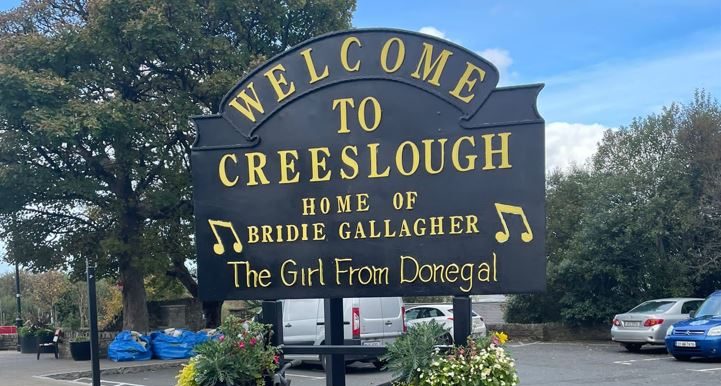The Irish Red Cross has responded to claim made by a bereaved father whose daughter was one of 10 people who lost their lives in the Creeslough tragedy in October 2022.
In a bulleted statement, the organisation states:
1. At all times, since the tragic explosion of October 2022, The Irish Red Cross has, as a humanitarian organisation, placed the bereaved and other beneficiaries of this fund, at the centre of our focus.
2. As an emergency humanitarian organisation we were able to channel the funds to those affected which were in four groups:
3. Bereaved families and those who were injured;
4. People who lost their homes and possessions;
5. people who lost their jobs ;
6. people who suffered trauma through witnessing the tragedy, and/or responding to the emergency with humanitarian selflessness.
7. The funding distribution was commenced within days. AT Christmas 2022 additional substantive funds were dispersed. In 2023 a methodology was designed and agreed for distributing the remaining funds in the fairest possible way, meeting the significant needs of bereaved families and injured people. In that way, we distributed the vast bulk of the funds. All along, we were continually giving out money to those in need. There was never a question of unnecessarily holding back funds.
8. The understanding with the community and those consulted with, was that any remaining monies following the dispersal of money, in particular to the families and bereaved, would be allocated to tragedy-related community projects (not geographically limited to Creeslough.
9. This chimes with the opening of the appeal fund by the Irish Red Cross, when it seemed clear that there would be a need to provide both immediate and longer term supports to the people and communities affected by the tragedy. And it is in that context that the remaining residual 7% of the funds are being planned for. Charity Law, and governance standards require appropriate funds oversight as well as a reliable process for distribution. Sometimes that can take longer than expected because we are dealing with a community that has been traumatised. Equally, the IRC has an obligation not to assign the funds for any service/offering that others (e.g. HSE, Tusla etc) will fund. It has taken longer than anticipated to assess the proper added value that the publicly donated funds can make due to a range of delays not within the IRC’s control.
10. Charity Law and best practice in governance requires the IRC to come to its own decisions about where best to allocate the remaining funds and to inform that we have engaged significantly with the community, with the families and with other stakeholders throughout this process and have been fully transparent about every stage of the process.
Three consultation meetings were held with the Community (October ‘22, February, and May 2023), along with meetings with bereaved families and others.
Subsequently, a significant number of contacts with local and regional community associations and statutory authorities took place to understand how the IRC might best ensure effective use of the remaining funds.
11. We believe that working with existing community service-providers is the best path to enable Irish Red Cross to achieve the most effective use of the remaining funds, in line with established principles for humanitarian action and best practice in charity governance.
We have been actively engaging with stakeholders to develop a model based on supporting local community organisations to become the effective channel to deliver ‘long-term assistance’ as promised.
12. The Irish Red Cross has had significant amounts of engagement with all the families including the Harper family.
As recently as March 2024 a detailed letter was written to the Harper family outlining all these details along with other information. All of the questions posed to the Irish Red Cross have been answered in full with explanations provided.
13. At no point did Irish Red Cross commit that the money would go to the Letterkenny Rugby Club (or other club) so they could train up a bereavement officer. No commitments of any kind were made because the consultation engagements were listening exercises with different stakeholders. These and many others ideas were floated by different members of the community, but it was for the IRC to determine what expenditure it would make based on the need and also what others were doing.
14.The Irish Red Cross has demonstrated its full commitment to the people and communities affected by the Creeslough tragedy and it is a sign of this commitment that we have taken the time to identify the most appropriate process for the remaining funds. The length of time is not particularly unusual in our experience in terms of post-tragedy emergency events. We are mindful of the need to ensure the publicly donated funds are spent well.
15.The Irish Red Cross does not intend to walk away from the Creeslough community – indeed our volunteers are embedded in that community.
Additionally, we have donated the value of €60k into the fund’s management ourselves last year along with a further €10k during this year also. Additionally and as previously communicated, we have taken zero percent out of the fund to cover our costs.
THE NEXT STEPS
We are currently in active discussions with various community group representatives to decide on the best methodology for evaluating projects and allocating the remaining funds, and will complement this with a visit during July.
The areas identified thus far from the community are: i: Ongoing trauma support; ii: Support for youth development; A recognition mechanism of some description. We anticipate being in a position to communicate to all stakeholders the details around the implement of this final phase by next month.










